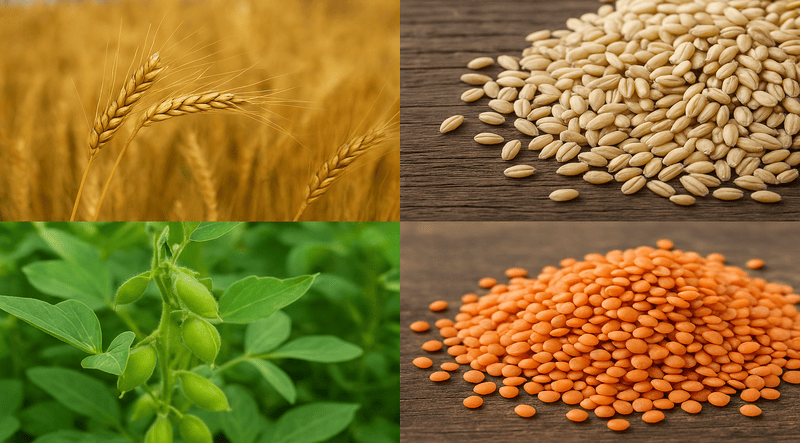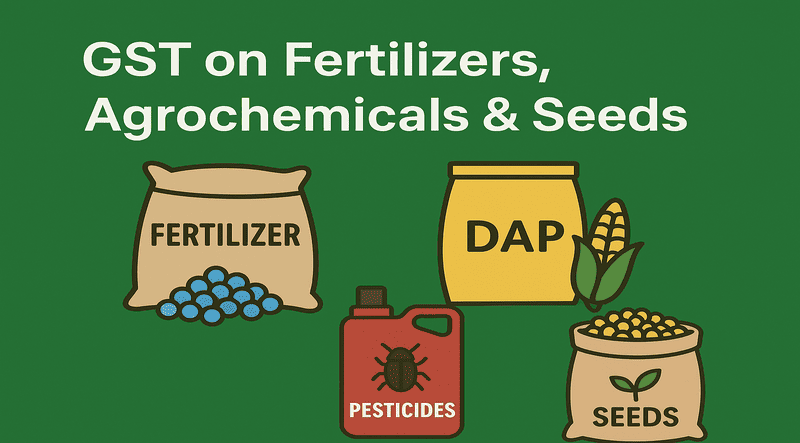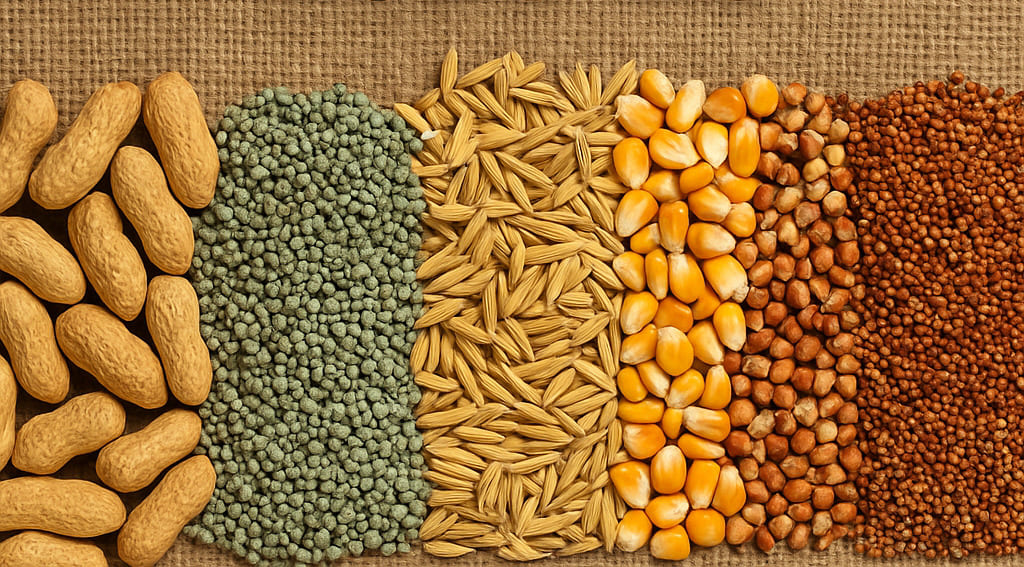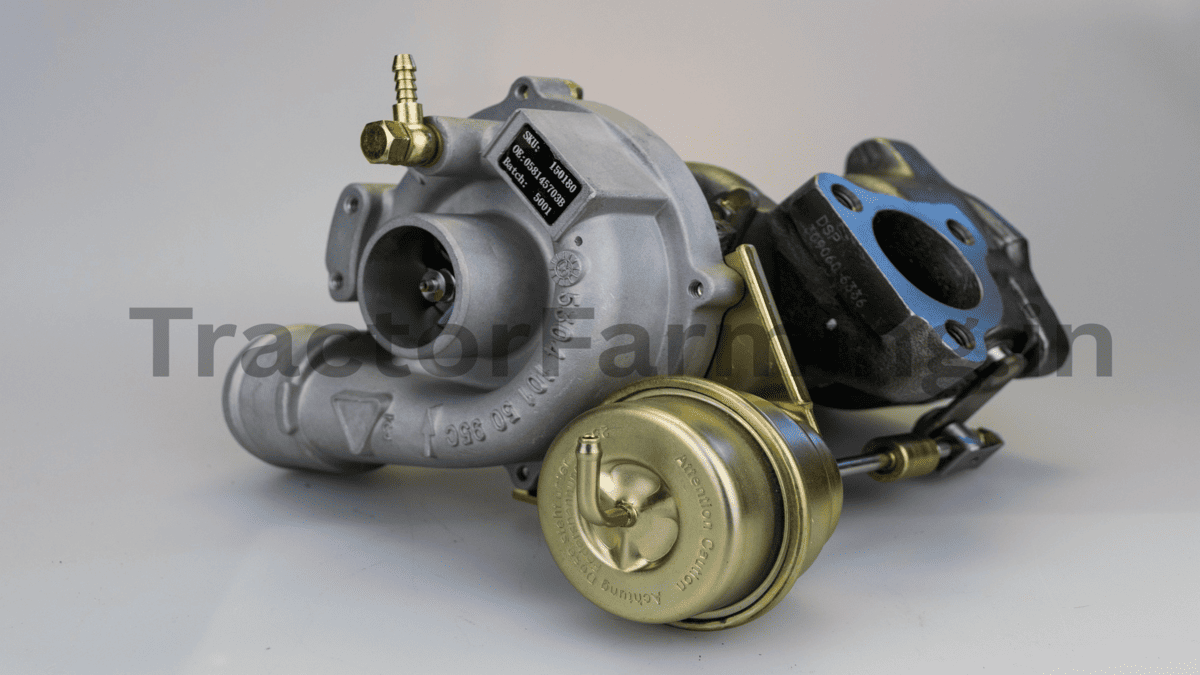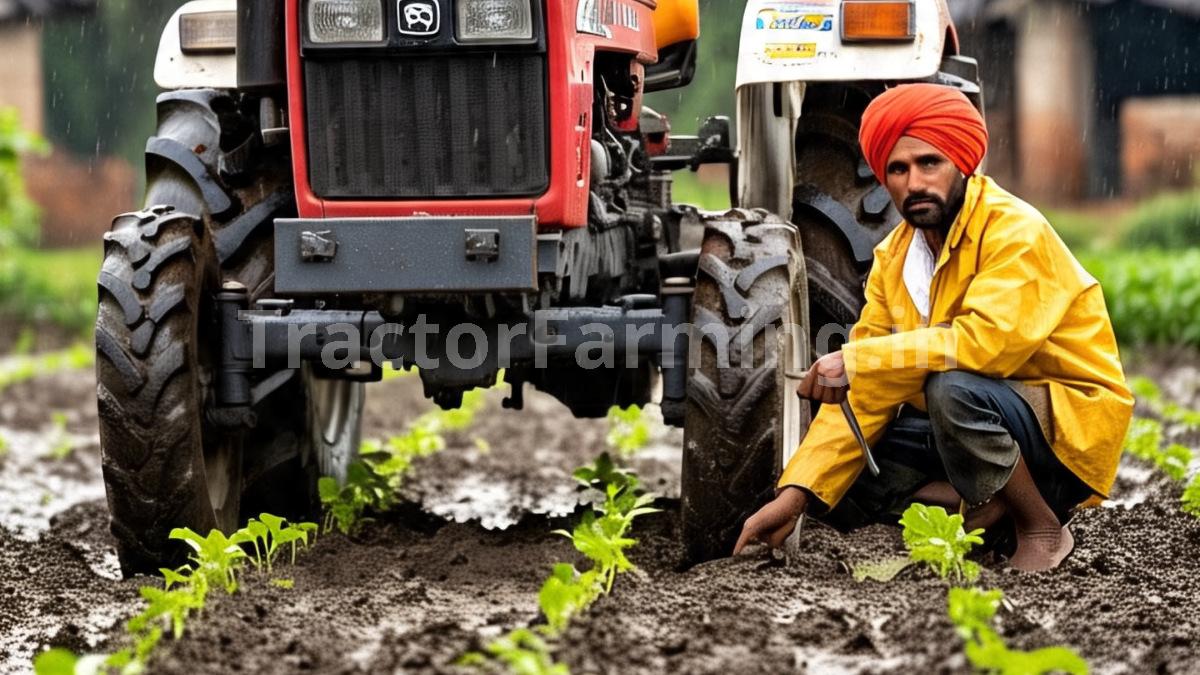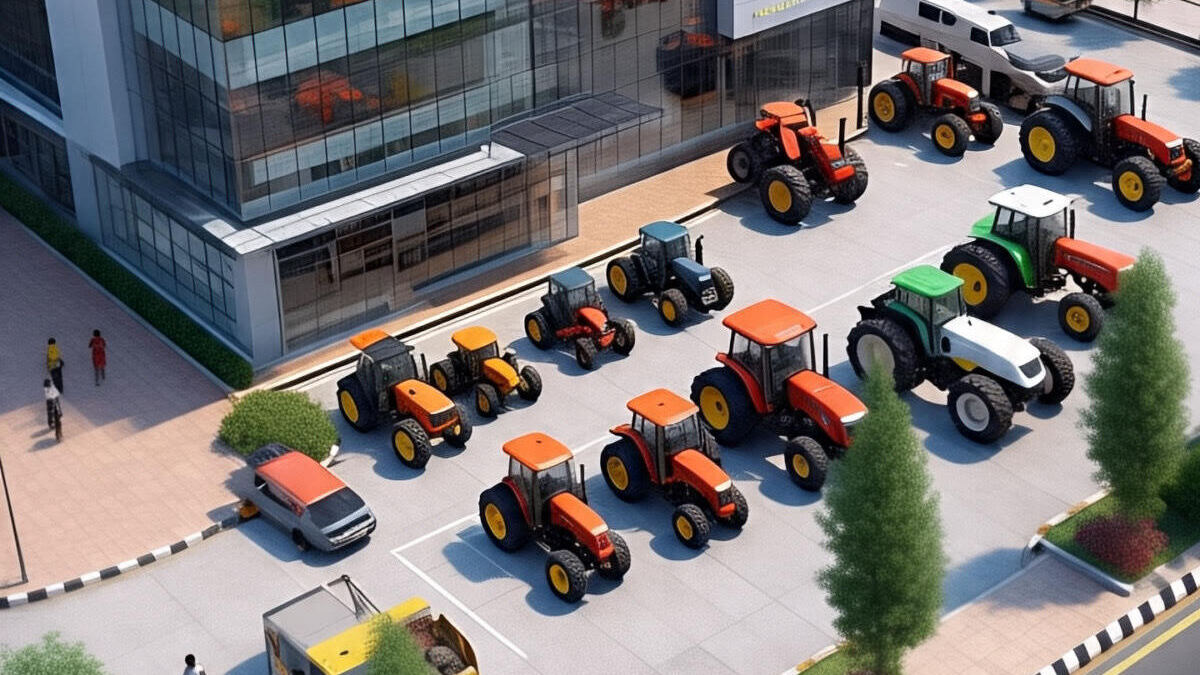Paddy Farming: A Complete Guide from Sowing to Harvesting
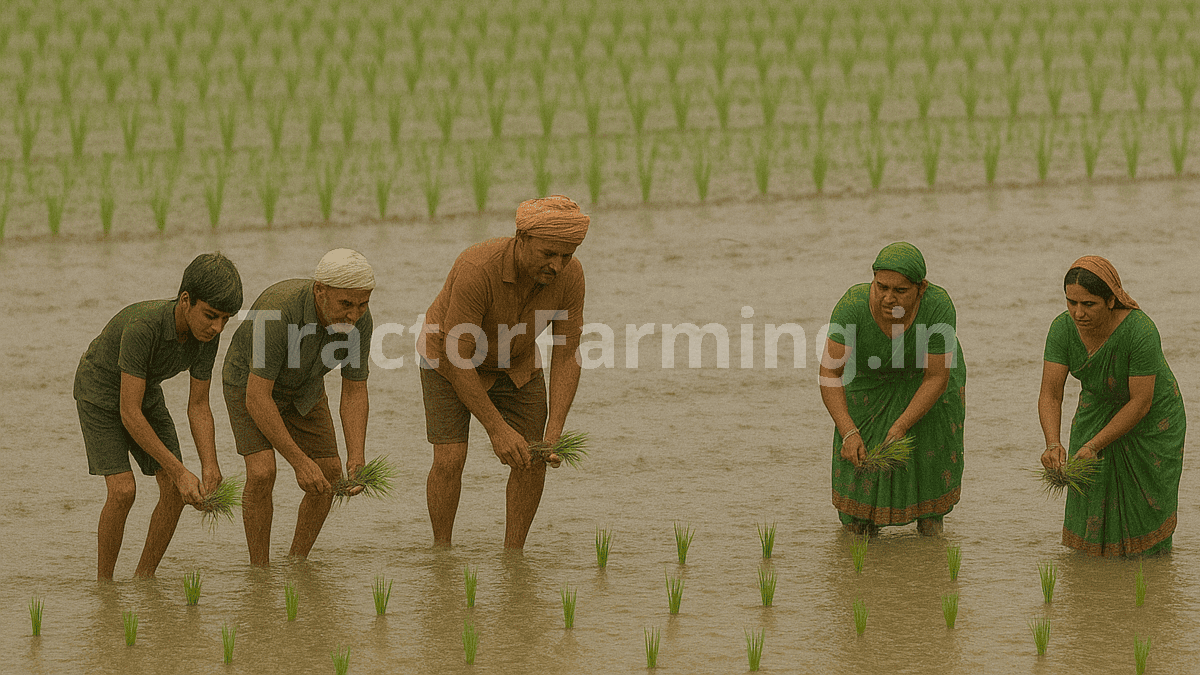
Paddy (rice) is India’s staple crop, covering nearly one-fourth of the cultivated area and feeding millions. Its cultivation spans diverse climates – from sea level up to 2000m in Kashmir or Kerala’s Kuttanad – because rice adapts to heavy rainfall and waterlogging. However, to succeed, farmers must match cultivation practices to local seasons, climate and soil.
Climate, Soil and Zones
- Temperature: Rice thrives in warm, humid climates. Optimal growth occurs between ~21°C and 37°C, with germination at ~18–40°C. Very young plants need ~25°C, flowering ~27–29°C, and ripening around 20–25°C. Rice tolerates high heat (up to ~40–42°C), but hot spells during flowering can cut yields.
- Rainfall/Water: High rainfall (100–200 cm/year) or assured irrigation is crucial. Rice fields are usually flooded or kept wet. Flooding suppresses weeds and provides consistent moisture. In modern practice, Alternate Wetting and Drying (AWD) can save water by periodically letting fields dry before reflooding. In any case, paddy fields need to be near rivers, canals or groundwater in lowlands.
- Soil: ice grows on many soils, but those with poor permeability (clay loams) that hold water are best. Acceptable pH ranges widely (5.0–9.5). Good land preparation is key: fields are plowed and planked, then puddled (churning under 5–10 cm of water) to kill weeds and reduce water seepage
- Zone Differences: India’s vast climate means paddy schedules differ by region. Table 1 summarizes typical practices:
| Region | Key States | Sowing(approx.) | Harvest(approx.) | Water Source |
| Northern | Punjab, Haryana, UP, etc. | June – July | Sept – Oct | Irrigated |
| Eastern | Bihar, Odisha, WB, etc. | June – July | Sept – Oct | Mainly rainfed |
| Southern | AP, TN, Karnataka | June (Kuruvai), Aug–Sept (Samba) | Sept–Oct (Kharif), Dec–Jan (Samba) | Irrigated (deltas) |
| Northeast | Assam, NE states | June – July | Sept – Oct | Rainfed, heavy rainfall |
| Western | Gujarat, Maharashtra | June – July | Sept – Oct | Mostly rainfed |
Nursery and Sowing
- Nursery Raising: Most farmers use transplanting. Seeds are pre-germinated (soaked and dried), then broadcast or dibbled on a small puddled nursery bed (1/10th the main field area). Nurseries are sown ~20–30 days before transplanting. Shallow flooding after a few days helps seedlings grow with the right density.
- Seed Selection: Use high-quality, certified seeds of local or improved varieties. Choose varieties suited to your zone (short-duration varieties in Punjab mature ~110–125 days, while long-duration basmati may take 130–145 days). Treat seeds with fungicide (e.g. Carbendazim) and bioagents (Trichoderma) to prevent diseases, as recommended by local agri-extensions.
- Transplanting: When seedlings are 20–30 days old (about 20–25 cm tall), uproot them carefully and transplant by hand or machine. Plant in straight rows with spacing ~20×10 cm (row × plant) for single seedlings. If sowing is delayed, closer spacing (15–18 cm) is used. Alternatively, direct seeding (broadcast or drilling pre-germinated seed) can save labor, but needs precise water and weed control.
Water Management
- Flooding: Once transplanted, keep a shallow puddle (3–5 cm) in the field until tillering is complete. Consistent water suppresses weeds. About 30–40 days after transplant (when panicles form), drainage may be allowed intermittently.
- Alternate Wetting & Drying (AWD): A modern method is to flood and then let fields dry (no visible water) for a few days before reflooding. AWD can reduce irrigation by ~20–30% without yield loss. It also encourages better root growth. Controlled irrigation systems (pumps or field channels) are needed.
- Timing: Irrigate immediately after transplanting and maintain moisture through active tillering. You can skip or postpone some irrigations when the crop matures. Ensure final irrigation ~2–3 weeks before harvest to ease threshing.
Nutrient, Fertilizer Management
Rice needs a balanced N-P-K supply for good yield. Recommended doses (per acre) are roughly:
- Non-hybrid paddy: 40 kg N, 20 kg P₂O₅, 20 kg K₂O. (Example: apply 43–44 kg urea and 125 kg SSP [~20 kg P₂O₅] with 33 kg MOP [~20 kg K₂O] at sowing, and 43–44 kg urea again at 30 days
- Hybrid rice: 48 kg N, 20 kg P₂O₅, 20 kg K₂O. (Example: 130 kg urea, 312 kg SSP, 83 kg MOP at transplant; then 54 kg urea at 30 days and 27 kg urea at 60 days.)
- Apply N in split doses (half at transplant, the rest in 2–3 splits) to match crop demand. Give full P and K at or before transplanting.
- Micronutrients: Zinc deficiency is common in many paddy soils. A one-time basal spray of 0.5% zinc sulfate at early tillering can help. Farmers should perform soil tests to adjust fertilizer (N, P, K, Zn, S etc.) for their fields.
- Organic & INM: Integrate organic manures (FYM, compost) with chemical fertilizers. Organic matter improves soil health and moisture retention. Many farmers practice Integrated Nutrient Management (mix of organic and inorganic) for sustainability.
Weed, Pest and Disease Control
- Weed Management: Rice fields often have grasses and broadleaf weeds. Maintaining a flood is the first defense (drowns many weeds). Farmers then weed by hand or use a mechanical weeder 20–25 days after transplanting. Pre-emergent herbicides (e.g. Butachlor or Pendimethalin) are also used after sowing. For example, Saathi (Butachlor) can be sprayed at 80–200 g/acre around 10–14 days after sowing. If weeds still appear, apply early post-emergent herbicides (e.g. Oxadiargyl) following label instructions.
- Pests: Common pests include stem borers, leaf folders, brown/green planthoppers, and rice thrips. Signs like “deadheart” (central tiller dry) indicate borers; yellow tips/“hopper burn” indicate planthoppers. Adopt IPM (Integrated Pest Management): use pheromone traps for stem borers, release egg parasitoids or Bacillus thuringiensis against borers, and encourage natural enemies. Chemical insecticides (e.g. Thiamethoxam, Fipronil) are applied only if pest thresholds are reached. Always follow local extension advice to avoid pest resistance.
- Diseases: Major diseases include blast (Magnaporthe), sheath blight, bacterial blight, and tungro virus. Use resistant varieties when available (e.g. many popular Punjab varieties resist blight). Maintain field sanitation (destroy volunteer rice, manage water levels). If needed, apply certified fungicides: e.g. Tricyclazole for blast, copper oxychloride for bacterial blight, and carbendazim or Propiconazole for sheath blight. Bio-control agents like Pseudomonas fluorescens or neem products can also reduce disease. Rotate crops (e.g. rice-wheat) to break disease cycles.
- Rodents and Others: Protect seedlings and grains from rats/birds. Traps and making noise can scare birds. Use metal phosphide baits for rats if infestations occur.
Harvesting and Post-Harvest
- Timing: Harvest when grains are at physiological maturity – the panicles turn golden and grain moisture is ~20–25%. This usually occurs 90–150 days after transplanting, depending on variety. Early harvesting leads to immature grains; late harvesting causes shattering losses.
- Methods: Small farmers often cut plants with sickles. Larger farms may use combine harvesters to cut and thresh in one pass. After cutting, tie bundles and let them dry in the field for 5–7 days (if weather is clear).
- Threshing: Separate grains from straw. Traditional method is beating bundles on a platform. Modern threshers save labor. Protect harvested grain from animals and rain.
- Drying and Storage: Dry freshly threshed paddy to ~14% moisture (sun-dry on mats or use mechanical dryers) before milling. Store only properly dried paddy in a cool, well-ventilated place. This prevents mold and aflatoxin formation.
Modern vs Traditional Methods
| Aspect | Traditional Practice | Modern/Improved Method | Benefit of Modern |
| Land Prep | Bullock plow (diya), uneven fields | Tractor plow, laser leveling | Faster prep; uniform fields save water |
| Nursery | Broadcast wet-nursery, dense | Well-prepared beds; dry-bed/mat nurseries | Uses <1/10 area, less seed; easier transplanting |
| Transplanting | Manual clump transplanting | Mechanical transplanters; Single Seedling Transplanting (SRI) | Quicker; uniform plant spacing; saves seedlings |
| Watering | Continuous flooding | Alternate wetting-drying, drip systems | 30% water saving (AWD); higher yield potential |
| Weed Control | Hand weeding | Mechanical weeder (rotary weeders); herbicides | Cuts labor; effective weed kill |
| Fertilizer Use | Broadcasting; blanket rates | Soil-test based, split applications | Efficient nutrient use; higher uptake |
| Pest Control | Heavy pesticide use | Integrated Pest Management (IPM) | Lower chemical cost; safety for environment |
| Harvesting | Sickle cutting, manual threshing | Combine harvesters | Saves time and labor; reduces grain breakage |
| Post-harvest | Sun drying, manual cleaning | Mechanical dryers, cleaner machines | Faster drying; better grain quality |
For example, the System of Rice Intensification (SRI) is a modern practice: it plants single young seedlings with wide spacing, uses intermittent watering, and manual weeding with a mechanical weeder. SRI uses only 5–8 kg seed/ha (vs 40–50 kg normally), boosts tillering, and has shown 20–50% yield increases in trials. However, it is labor-intensive (for weeding) and requires learning the method.
Conclusion
Paddy cultivation is vital for Indian farmers. Success depends on timing (sowing with monsoon), matching practices to local climate/zone, and adopting efficient methods. By ensuring proper land prep, using quality seeds, balanced fertilization, and integrated pest management, even first-time farmers can get good yields. Modern tools – improved varieties, mechanization, SRI, AWD, and IPM – can greatly increase production and reduce inputs. Combining traditional knowledge with modern techniques will help rice growers meet rising demand sustainably and profitably.
